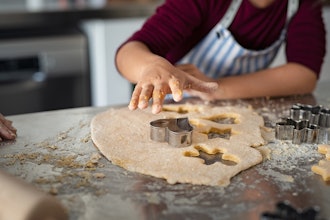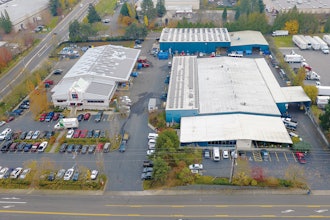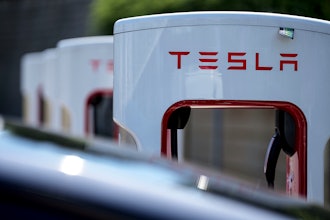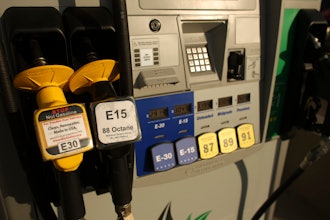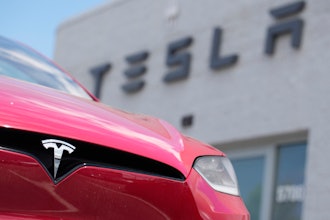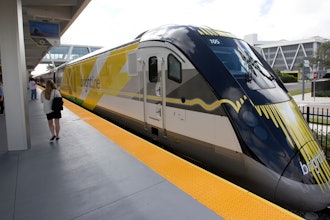Clean-in-place (CIP) is an important part of many food and beverage processes. The need for thorough cleaning and safe production is paramount, but efficiency is also important to ensure operational costs are minimized and plant run time maximized. In today’s markets, there is an increasing need for more frequent product changeover to meet changing and varied consumer demands. This presents increased production challenges and the time to changeover between products becomes an important criterion for operational efficiency.
Situation
An international beverage company faced the challenge of producing an increasing number of difficult-to-clean products (pungent flavors, solid material and increased spoilage potential) at its bottling plants. This was combined with an increasing need to run smaller production runs, requiring more frequent product changeovers which had a significant negative impact on available production time. A keen social ethic to provide sustainable production along with drivers for flexible production and reduced costs led the business to review its CIP processes.
Challenge
The increased use of more pungent product lines with different flavors and additives across the customer’s sites made equipment more difficult to clean from an organoleptic and microbiological standpoint. Frequent product changes meant a solution was required that would improve the process efficacy, lead to better operational efficiency as well as reduce environmental impact — save energy and water, reduce potentially harmful waste streams and improve conditions and safety for plant personnel.
Solution
APV SafeWater’s cleaning and sanitizing fluids have been shown to maintain or improve cleaning and sanitizing effectiveness within the CIP process. The first step in this project was to go through a rigorous validation process, including microbiological and organoleptic testing, with the customer to prove it safe and effective. SPX and EAU worked closely with the beverage company to ensure all of their requirements were being met through rigorous testing.
The technology produces a cleaning and/or sanitizing agent through the electrolysis of a solution of sodium chloride or sodium carbonate. The system produces Hypochlorous acid (HOCl), a weak acid but powerful and natural sanitizer also produced by the human body to fight infection. HOCl sanitizes rapidly without the need for heating and, as it is produced from readily available natural materials, offers a highly sustainable sanitation and cleaning solution. The technology uniquely generates fluids at the required concentration with no mixing or dilution required. Without the need to add dilution water, SafeWater provides superior cleaning and sanitizing as every drop of the solution has been electrolyzed.
Superior cleaning and sanitizing without the need for heating offers reduced cleaning times and increased plant running times. For the beverage company, this is especially critical during seasonal production peaks where maximizing production times is critical to the business. SafeWater delivers drastically reduced bottle-to-bottle downtime for a traditional full CIP cycle. Typically the time savings is over 50 percent and in many cases, this saves hours per CIP. For product changeover CIP processes, the typical time for SafeWater is 15 minutes or less — a significant savings compared with the previous technology which took around one hour. This supports the beverage company’s ‘just in time’ production approach, which requires smaller batch runs and more frequent product changeovers.
The plate generator system used to produce SafeWater is capable of continuous production in large volumes to meet the needs of the company’s large facilities. The system is fully automated and operators only need to check the salt levels within the system on a weekly basis. Important parameters including fluid concentration are continually monitored and alarms if they fall below acceptable values, shutting down the system to ensure that the SafeWater produced is within specifications without requiring monitoring by the plant personnel.
Traditional CIP technology uses concentrated chemicals shipped to site which are often applied at elevated temperatures. Other electrolyzed water generators produce fixed ratios of cleaner to sanitizer, whereas SafeWater is produced on site in volumes to match site demands at any particular time, eliminating waste production and reducing water consumption. Cleaning and sanitizing at ambient temperature, SafeWater reduces the energy consumed for the process and, using just salt and water to create the fluids, both the cleaner and sanitizer are inherently safe and produce a safer, easy-to-handle waste water stream.
For this large beverage company, HOCl has proven to offer superior cleaning and microbiological performance with annual savings of between $50,000 and $120,000 in chemical costs along with an associated $20-50,000 saving in costs for wastewater treatment. The reduced changeover time between products equates to savings between $100,000 and $1 million, depending on the plant production schedule and value assigned to increased plant production line availability.
The on-demand production of cleaning/sanitizing fluid to match the plant’s needs and the improvements in the cleaning process reduce water consumption related to the cleaning and sanitizing processes by an estimated 20-40 percent per year. The use of ambient solutions further reduces maintenance costs associated with the thermal stresses from hot CIP processes. SafeWater minimizes the impact on the environment with a reduced carbon footprint, reduced water usage and a safe, sustainable production methodology.
This system has delivered significant improvements to plant working conditions. The automation of the system provides a much simpler CIP process. The inherent safety of the fluids, coupled with the ambient temperature application also significantly reduces risks to safety of personnel, who no longer need to be concerned about chemical vapors, risk of caustic burns or hot machinery surfaces during CIP cycles. The value of personnel safety is sometimes difficult to evaluate in monetary terms but is surely one of the most important benefits of the system.
Part of SPX Corporation (NYSE: SPW), the Flow Technology segment designs, manufactures, installs and services highly engineered solutions used to process, blend, meter and transport fluids, in addition to air and gas filtration and dehydration. The segment supports the food and beverage, dairy, pharmaceutical, oil and gas, energy, and industrial markets worldwide.
Based in Charlotte, North Carolina, SPX Corporation (NYSE: SPW) is a global Fortune 500 multi-industry manufacturing leader with over $5 billion in annual revenue, operations in more than 35 countries and approximately 15,000 employees. The company's highly-specialized, engineered products and technologies are concentrated in flow technology and energy infrastructure. Many of SPX's innovative solutions are playing a role in helping to meet rising global demand for electricity and processed foods and beverages, particularly in emerging markets. The company's products include food processing systems for the food and beverage industry, critical flow components for oil and gas processing, power transformers for utility companies, and cooling systems for power plants. For more information, please visit www.spx.com.
Based in Kennesaw, Georgia, EAU Technologies, Inc. (OTCQB: EAUI), is a technology developer and leading provider of Electrolyzed Water (EW Technology marketed as Empowered Water™ and SafeWater™ through its relationship with SPX). EAU's water-based and non-toxic solutions are replacing many of the traditional methods now used to clean and disinfect in large industries such as food processing and agriculture. EAU uses only water, food grade electrolytes and electricity to create all of its non-toxic solutions. The active ingredients in the solutions EAU creates through electrolysis are GRAS (generally regarded as safe) approved and/or safe around humans and animals at suggested application levels. Please visit our website and sign up to be emailed our press releases and public announcements.















